You don’t need a lot of horsepower or a stick shift to have fun
If there is one thing that car enthusiasts somewhat agree with universally, it is the belief that “It’s better to drive a slow car fast than a fast car slow,” and honestly, it makes a lot of sense. Pushing a “slower” car to its maximum potential feels raw and exciting, as it allows you to experience everything that it's got in a way that feels intoxicatingly rewarding.

When you’re hitting the apexes, going through the gears, and feeling every nerve ending in your body twitch at the same time while driving, it’s not about flexing 500 or four digits of horsepower; it’s about fun, skill, and feeling alive behind the wheel. You’ve got to work for it, and it rewards you with a stream of serotonin and adrenaline that you can feel rushing in your veins.
That’s precisely the kind of energy the 2025 Volkswagen Golf GTI brings. It’s not the flashiest or most powerful car out on the highways and byways, but that’s the point—it’s built for people who love to drive and nothing else. It blends turbocharged excitement with everyday practicality, giving you sharp handling and a boatload of electronic gizmos in a way that doesn't seem to spoil that classic hot hatch vibe. Whether you’re carving up back roads or just commuting with style, the GTI proves you don’t need a supercar to have fun.

View the 4 images of this gallery on the original article
The Golf GTI is the hot hatch OG
The Volkswagen Golf GTI is often credited as the car that kick-started the hot hatchback segment. First launched in Europe in 1976 and later in the United States as the Rabbit GTI in 1983, the GTI took the practicality of the standard car and injected it with just enough performance goodies to make driving really exciting.
The first U.S.-market GTI made just 90 horsepower, but it wasn’t just about raw speed. It had a formula that hit a sweet spot that resonated with a wide variety of drivers who wanted fun without sacrificing functionality. It made fans out of those who found driving something this small and smart cool. Over the decades, it’s remained a segment benchmark that still inspires a wave of copycat competitors. Its loyal fanbase includes famous owners that include the likes of auto personality Jeremy Clarkson, Formula 1 star Carlos Sainz Jr., and the Gordon Ramsay.
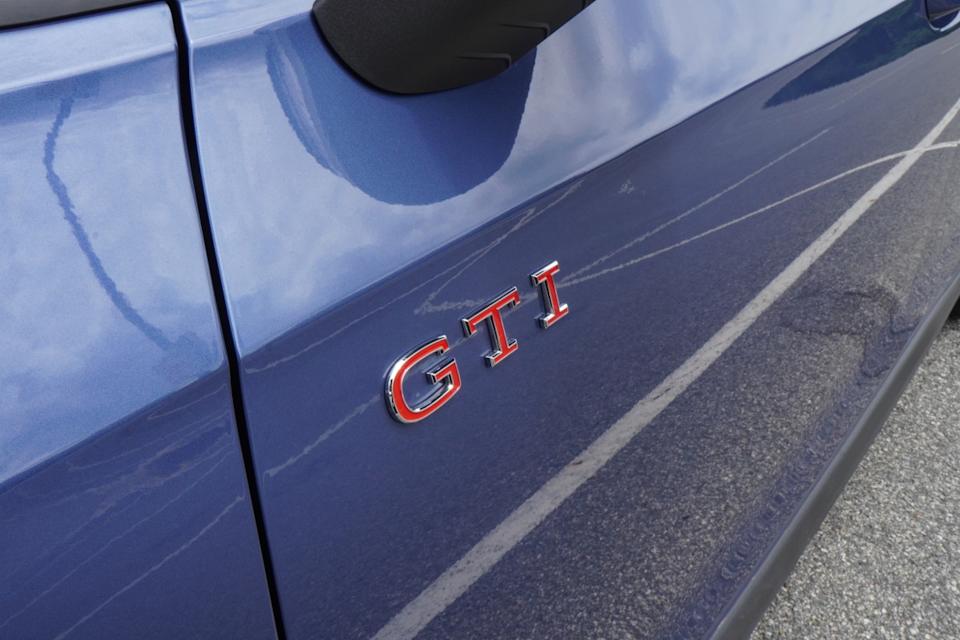
View the 4 images of this gallery on the original article
For 2025, the GTI gets a mid-cycle refresh with a few updates that distinguish it from the previous year’s model. Up front, its face gets a full-on glow-up, with new LED headlights, daytime running lights, and fog lights, as well as additional LEDs illuminating both the upper grille and the VW logo. On the inside, the GTI gets some minor changes, including real buttons replacing the touch capacitive controls on the steering wheel. However, its most controversial change lies in the space between the front seats, as the GTI is exclusively sold with a 7-speed dual clutch automatic gearbox, with no option for a stick.
The exterior is distinctly GTI
Though a lot has changed with its size throughout the GTI’s four decades of existence, the exterior styling of the 2025 model retains much of the familiar GTI look that fans and enthusiasts have grown accustomed to, red accents and all. Compared to many of its price and power competitors, including the Honda Civic Si, the Toyota GR86, Subaru WRX, and the Hyundai Elantra N, the GTI particularly stands out as a car that’s noticeably softer in the styling department, free of excessive or aggressive aerodynamic exterior kit that screams “boy racer” to anyone else out on the road.
The GTI’s familiar 5-door layout remains virtually unchanged, a positive sign that suggests there isn’t much reason to change a formula that still works. However, the new LEDs up front give the GTI a much more “elevated” and “premium” image than previous models. The illuminated face, featuring a nose glowing with a soft white LED, gives the hot hatch a playful resemblance to some Mercedes-Benz models.
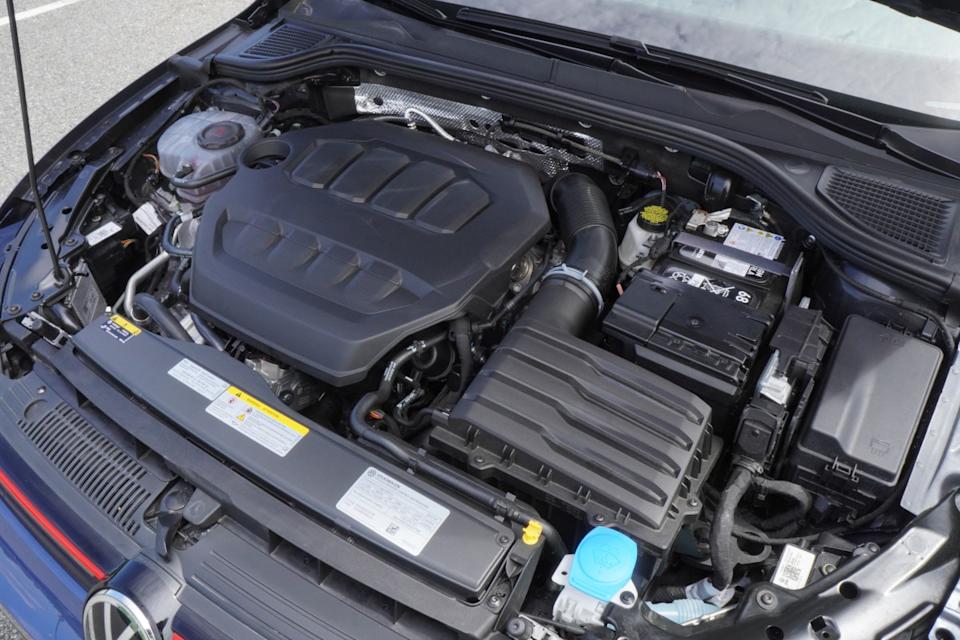
Power when you want it, smoothness when you ask for it
Another key feature that remains unchanged on the 2025 GTI is its powertrain. Under the hood of the Vee-Dub GTI is the same familiar 2-liter EA888 turbo four-cylinder from the previous year, making 241 horsepower and 273 pound-feet of torque. It isn’t all of the power in the world, but that’s not the point. It’s a manageable powertrain that feels adequately punchy for all seasons and conditions, whether it’s on a spirited drive at its 6,500 RPM redline or on a twisty road, passing a semi-truck on the Jersey Turnpike, or parting the dense seas of bumper-to-bumper traffic with a trunk-load of Costco shopping in the trunk.
As for the elephant in the enthusiast’s room, let’s talk about what the turbo four-pot is mechanically connected to: a 7-speed dual clutch automatic gearbox. In “manual mode,” I found it to behave similarly to gearboxes in much more expensive performance cars, as it can row through the gears with lightning-quick shifts faster than what’s possible with a manual.
If there is one other car that I can give this aspect of the GTI a one-to-one comparison to, it would be the automatic version of the Toyota GR Corolla. While the GR Corolla’s Gazoo Racing Direct Automatic Transmission (GR-DAT) in the GR is an 8-speed with a traditional torque converter, I found that the 7-speed dual-clutch box in the GTI eerily behaved in a similar manner. Like the GR, the GTI’s auto box feels like it’s two-faced; it can be driven gently when the engine is lower than 4,000 RPM, and when given “the right-foot stomp of affirmation,” the turbos say ‘guten tag’ and launch you into a burst of speed all the way up to the redline.

In addition, during my time with the GTI, I found that exploring the vehicle’s driving modes was much more essential to the overall spirited driving experience than I had originally thought—almost to the point where it can be dangerously overlooked. At start-up, it automatically selects the default “comfort“ mode, which makes the car powerful and nimble enough for most everyday situations.
However, to extract the most amount of power and fun out of the GTI, you must experience it in sport mode. Although changing the driver mode begrudgingly requires you to navigate through the car's UI on its massive touchscreen, the end result feels akin to finding hidden levels or entering a cheat code in a video game.
To put it in the least dramatic terms possible, enabling sport mode in the GTI feels like removing the muzzle of a primal beast. The suspension gets tighter, the weight in the steering wheel gets more go-kart-like, while the engine response gets much quicker and more aggressive from the command of your right foot. Best of all, the exhaust gets louder, throatier, and your soundtrack gets accompanied with a soulful symphony that sounds like ”pop, pop, PUH-pop, pop.”
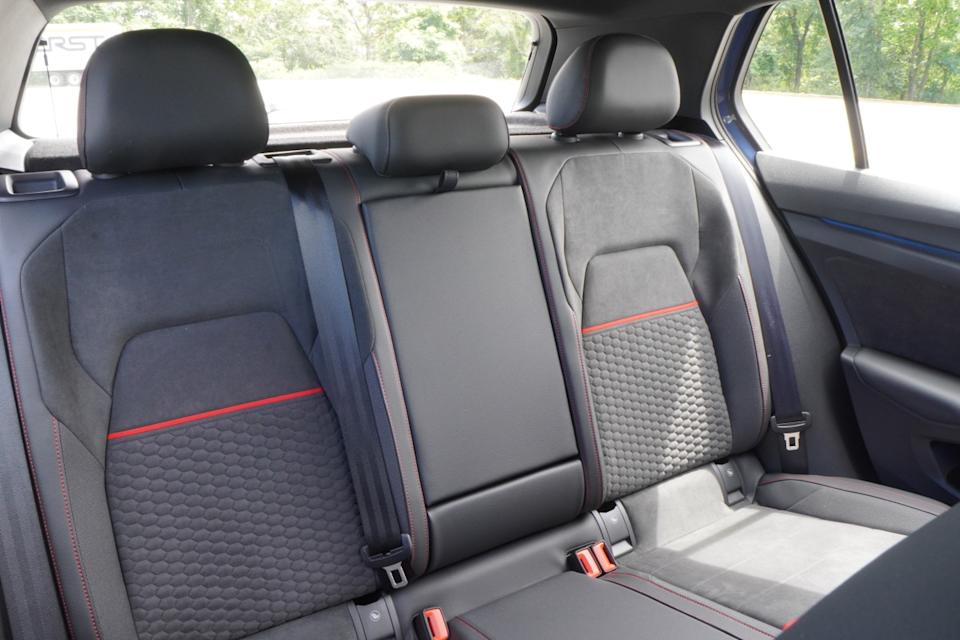
View the 4 images of this gallery on the original article
The interior feels uncomplicated, yet stylish
After spending a while with the GTI, it feels like it is designed to deliver a sports car experience in a package suitable for everyday driving: an exceptionally comfortable and ergonomic five-door hatchback. Before I had the chance to drive the GTI, I experienced the redesigned Tiguan during a visit to Bozeman, Montana. Although the Tiguan is slightly larger, I found that the GTI’s interior was crafted with a similar focus on maximizing space for optimal ergonomics. This clearly shows that Volkswagen intended the GTI to be a car for daily use.
Speaking of backseats, the second row seats are comfortable and spacious enough for full-grown adults, even when six-footers are sitting up front. Backseat drivers get their own charging ports and AC vents, but when they’re not there, the 60/40 seats can fold to increase the 20-cubic-foot cargo area to 35 cubic feet, which is more than enough for some pretty respectable Costco or IKEA runs.
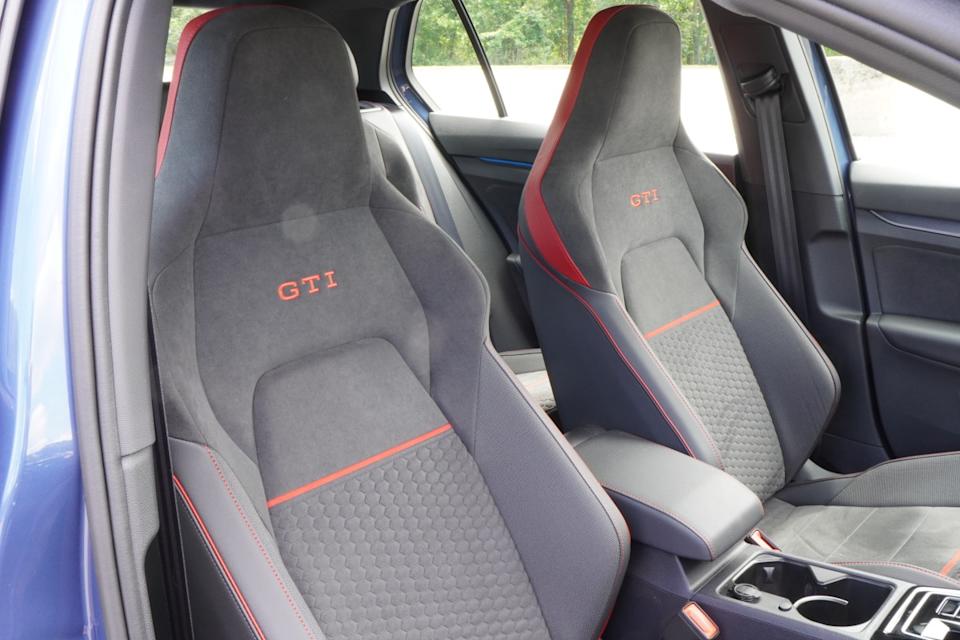
View the 3 images of this gallery on the original article
However, much like most of VW’s lineup, the centerpiece of the hot hatch’s interior is the big ol’ 12.9-inch touchscreen in the middle of the dash. For the most part, I found it to be pretty good. Volkswagen’s UI has a similar aesthetic and feel to an early Android smartphone, though most of the time, it was connected to my iPhone through Apple CarPlay.
The only gripes I had were with the haptic slider touch panels on the bottom of the screen, which control the volume in the middle and climate control temperature on the sides. They sort of work, but I would be very frustrated if it were an extremely hot or cold day, as it is hard to determine whether you should tap or drag your finger on it. Thankfully, the automatic climate control modes were sufficient to keep the cabin at a respectable temperature during a warm midsummer week in North Jersey and New York City.

View the 2 images of this gallery on the original article
Some issues haven't left me
Despite its upsides, the GTI isn’t an entirely “perfect” car, as a few flaws have left an impression. The first thing I found difficult to live with was that the front bucket-style seats felt distinctly “European,” for lack of a better word. These aren’t proper Bride, Corbeau, or Recaro one-piece track day bucket seats, but they are tightly bolstered to the point where they might feel slightly uncomfortable for some people. Granted, they’re designed to hold you and prevent you from sliding around — they do a perfect job doing that, but as a red meat and beer-loving American lad, these seats feel perfect for those who feel comfortable in Hedi Slimane jackets and jeans.
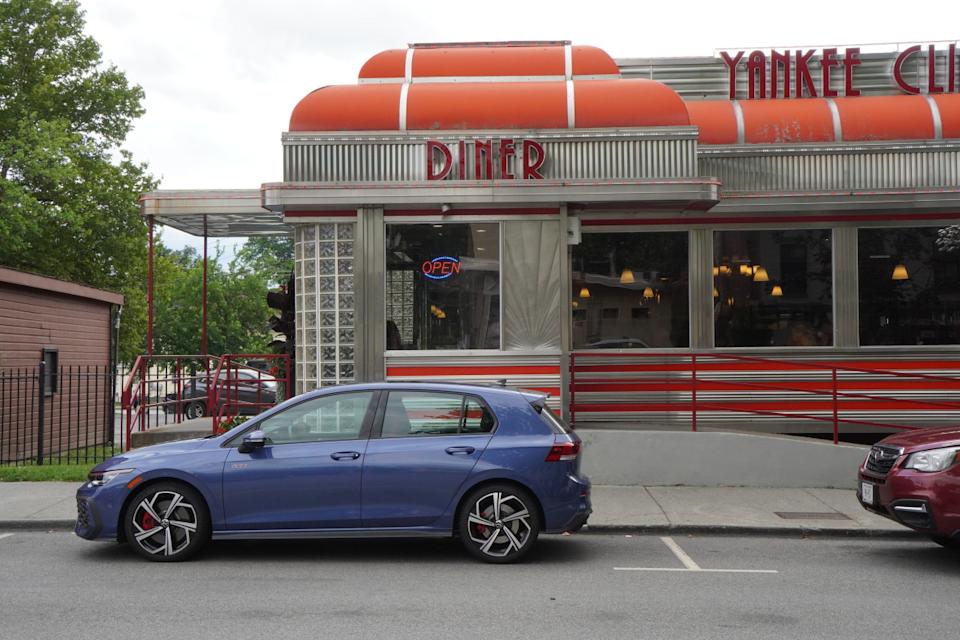
Additionally, if you intend the GTI to be a through-and-through performance car from the jump, you can find yourself bored very quickly if you do not explore and get used to features like its drive modes. If straight-line speed is more of your vibe, this may not be the car for you. Similarly, the GTI’s styling may be subtle, and some may find it unexciting. Even though the “regular Golf” isn’t offered in the U.S., the styling is muted and subdued enough for some people not in the know to believe it’s the standard model.
The only upside to these two issues is that there is a lot of aftermarket support for the GTI. A wide array of reputable manufacturers produce a throng of parts that can provide more power out of the 2-liter EA888, as well as more aggressive body modifications to bring out your inner boy-racer.

Final thoughts
The 2025 Volkswagen GTI starts at $32,445 and comes in three trim levels: S, SE, and Autobahn. The example I tested was a beautiful mid-range SE model finished in Slate Blue Metallic with a Soul Black and Tornado Red ArtVelours interior. The only option on this example was a set of $190 Monster Mats. In total, it came out to $38,835 with destination included.
As my last grievances have shown, there are many more harrowing things to worry about besides the lack of a manual transmission. It’s not the end of the world. It’s entertaining to drive at the absolute limit, though it may feel like a day’s work to get there. I think that this subtle but chilling reminder, in the end, gives this car an endearing quality that many enthusiasts will find as a quirk. It’s a car that will make you work for your fun with the weight of your right foot and the clarity of your mind; there isn’t any form of “instant gratification” here.
However, overall, the GTI provides an excellent value for those seeking a more enjoyable everyday car or a cooler family car, avoiding the crossover cycle. If there’s space for just one car on the driveway, this might be it. There is a reason why people with extensive experience who own or drive some of the most desirable cars, including pundits like Jeremy Clarkson and bona fide car collectors like Gordon Ramsay, have owned GTIs; they’re the original fun machine.
This story was originally reported by Autoblog on Aug 22, 2025, where it first appeared in the Reviews section. Add Autoblog as a Preferred Source by clicking here.
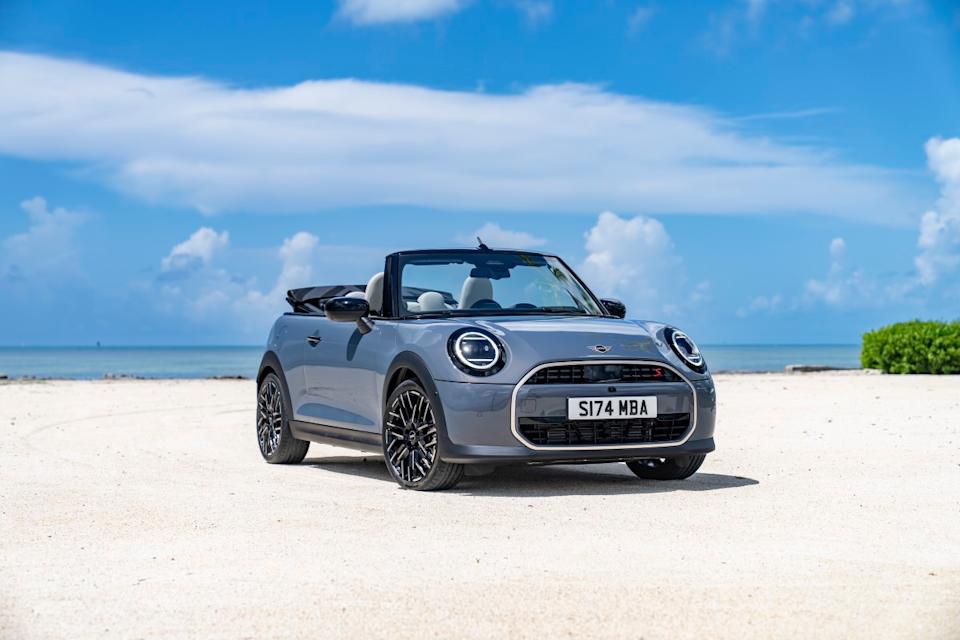
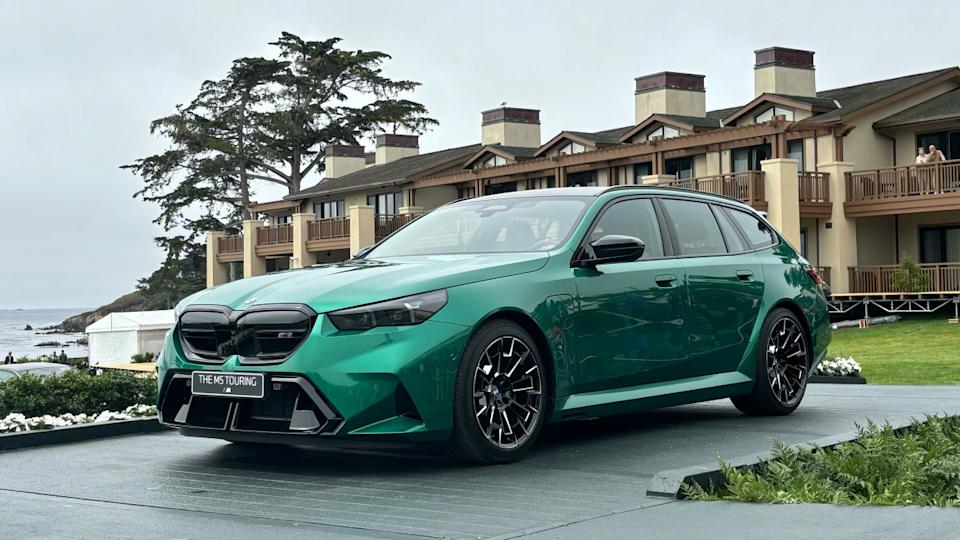
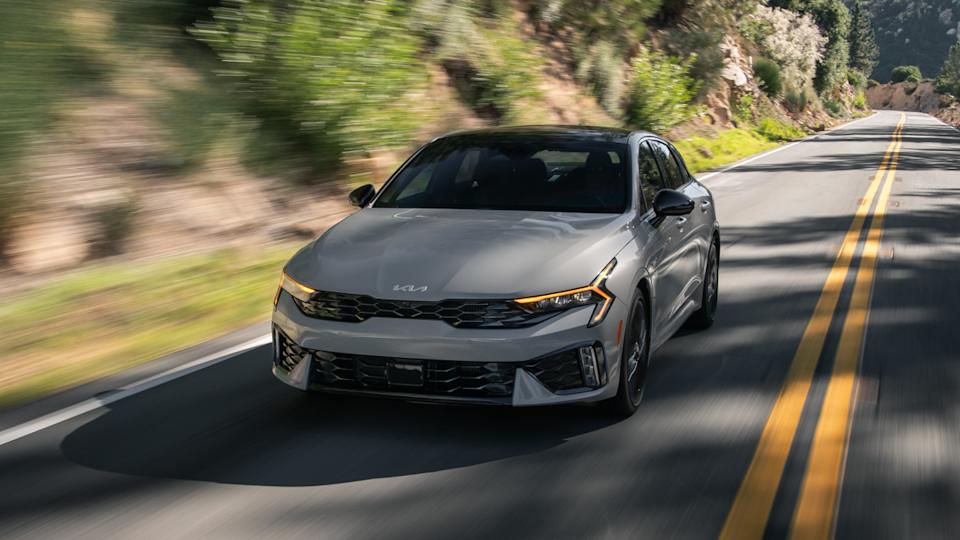
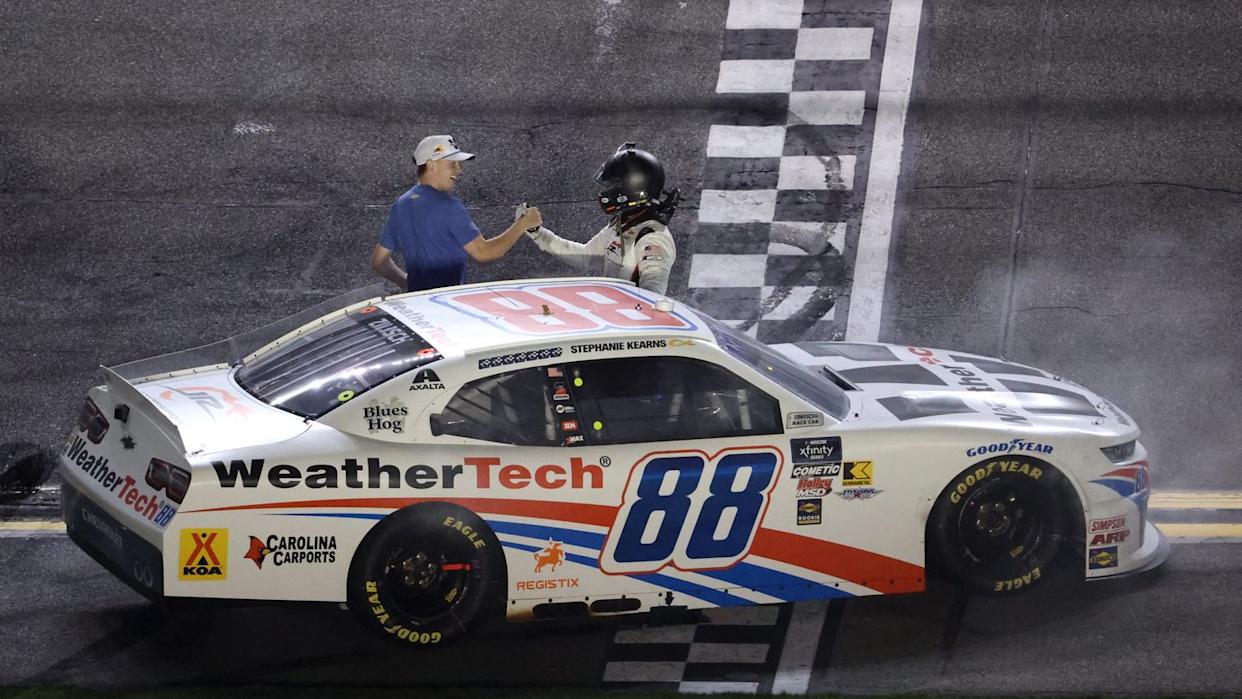


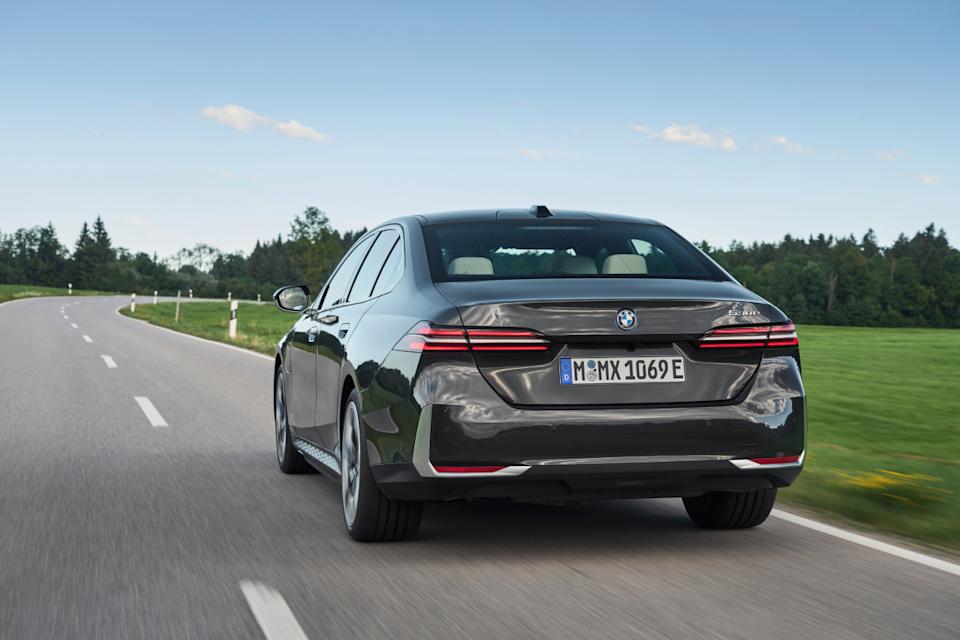
Comments